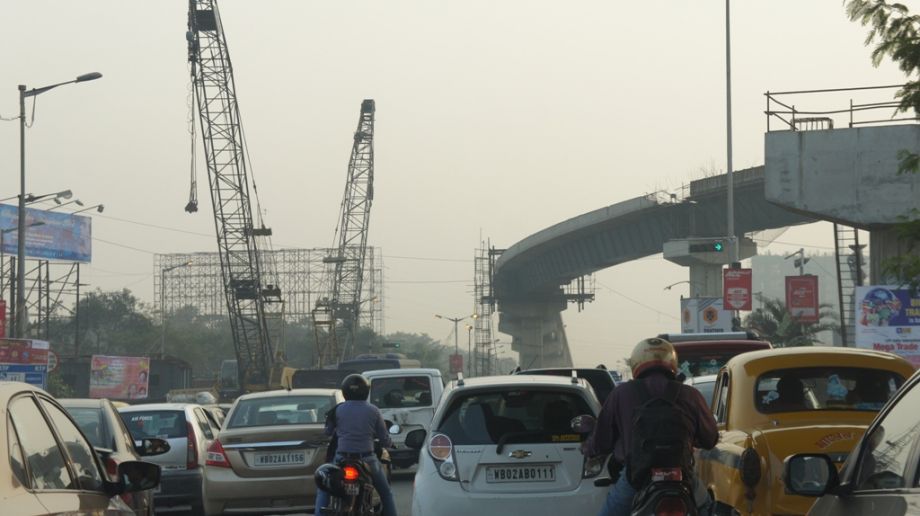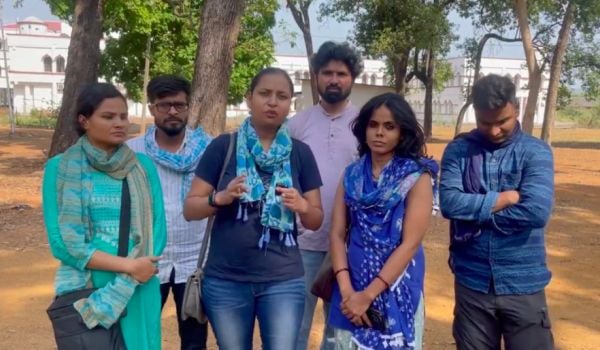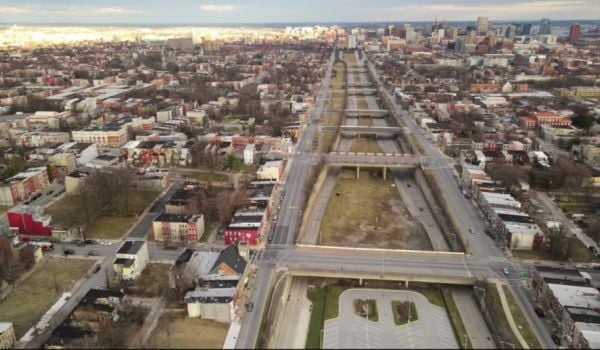For several decades in south Kolkata, Gariahat Boulevard has been a bustling hub of garment shops and street kiosks selling pillow covers, nightgowns, leather belts, school uniforms, imitation jewelry, greeting cards and everything in between. It’s always been the most popular destination for Kolkata housewives looking for high-end stores or a pavement-pounding bargain hunt.
So when the bulldozers finally arrived to raze the shops and erect a flyover in 2002, it may have been good news for commuters, but not for the retail destination.
The 571-meter flyover (or elevated highway, as it’s called in some countries) was funded by the Japan Bank for International Cooperation (JBIC) and completed within three years. It was inaugurated by the previous West Bengal Chief Minister Buddhadeb Bhattacharjee, who was heading a communist coalition that ruled the state from 1977 to 2011 that was routinely slammed for its lack of development activity.
But now, as far as flyovers are concerned, the city is on a roll. A flyover at Park Street (the Sunset Boulevard of Kolkata, known for its swanky hotels hotels and raucous nightlife) was inaugurated in 2005, and the city’s longest flyover, at 2.2 kilometers, opened in 2003 over the arterial A J C Bose Road. Between 2002 and 2005 the city got three much-touted flyovers after prolonged delays, and since then there has been a push to build more of them across the city and its outskirts.
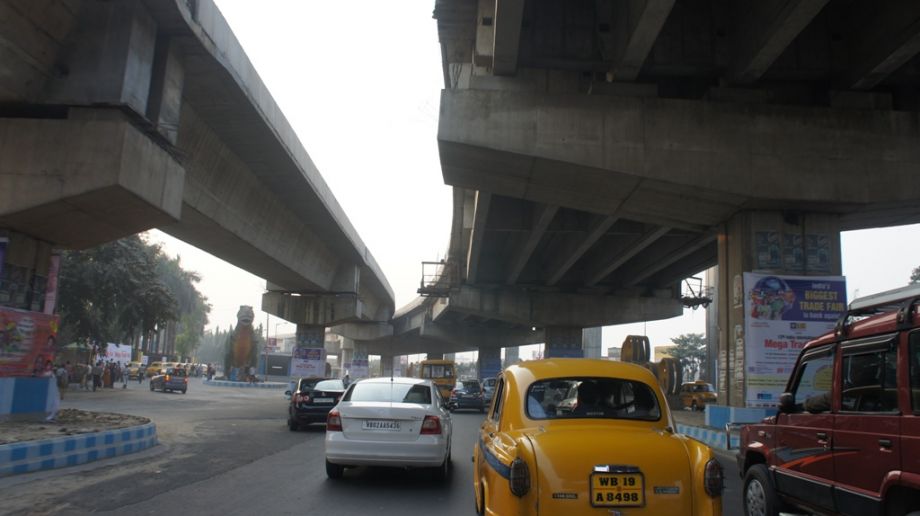
The average car speed in Kolkata is under 18 kilometers per hour — slower than a bicycle.
West Bengal Urban Development Minister Firhad Hakim is optimistic. “I think much of the traffic congestion problem of the city will be solved when these projects are completed,” he tells Next City. “We have now six ongoing flyover projects in the city and they will all help in easing the traffic.”
With only about six percent of the city’s land area is given over to roads — far less than other comparably sized Indian cities — Kolkata’s traffic woes are considerable. The flyovers, then, represent a significant departure from not only Kolkata’s traditional transportation infrastructure, but from it’s very transportation culture. This city, so defined by its narrow streets and bicycle commuters, now sees a solution to its chronic congestion problems in high-speed arterials raised high above the ground. It’s a system many Western cities tried in the 20th century, and now regret. And some urban planners say Kolkata’s architectural heritage is being severely compromised for the sake of adding more traffic capacity in a metropolis where the average traffic speed is between 14 and 18 kilometers per hour – a speed that makes traveling by car often slower than traveling by bicycle, which is ironic, since bikes were recently banned from the city’s major roads.
Sudakshina Gupta of the Centre for Urban Economic Studies at Calcutta University agrees that flyovers are necessary in a city where it is almost impossible to widen roads or remove encroachments. But, she says, they are often coming up in places not where they’re most needed, but rather where it’s easiest to build them. “In North Kolkata we have several spots where some flyovers are needed, while I can see one flyover coming up across the Eastern Metropolitan Bypass road (the road that connects the city to the airport) while the road itself has been built for fast-tracking the traffic,” says Gupta. “Perhaps the construction activity is more in places where we have less challenge in terms of acquisition or removal of encroachment.”
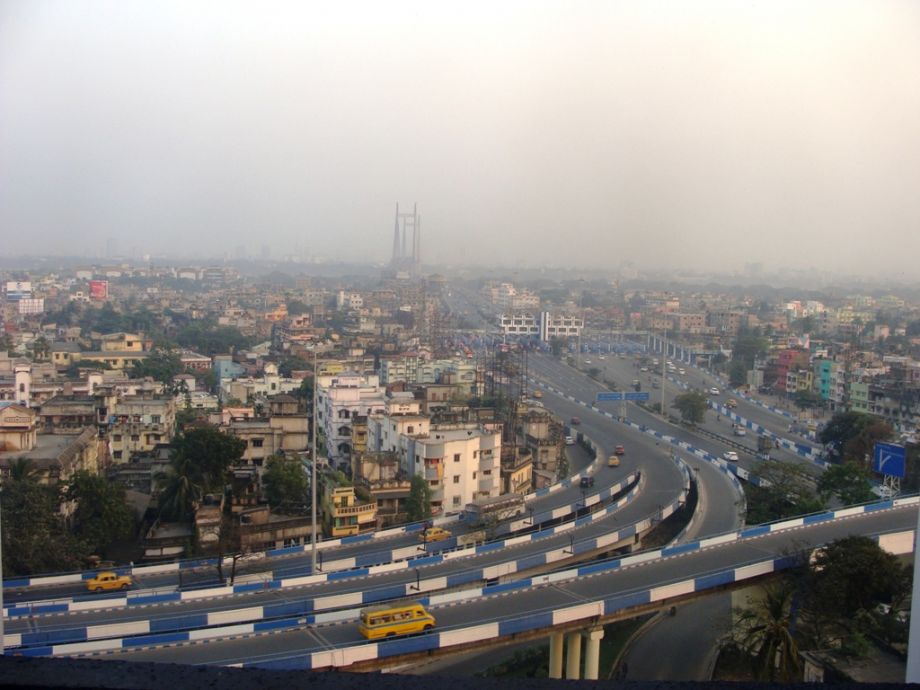
Critics of the flyovers worry they’re destroying the city’s architectural heritage.
Gupta feels the areas at the mouths of the flyover ends should be better managed too, or there will be more traffic bottlenecks in those areas, thwarting the very purpose of the flyovers. And according to her, the scars that flyovers cause to the city’s architectural heritage must be taken into account.
“Several heritage buildings are shadowed by the flyovers,” she says. For instance, Kolkata’s iconic Indian Museum, which only recently celebrated its bicentennial, has been almost smothered by the Park Street flyover. “The roads below the flyovers are also very dark. There appears to be a lack of coordination between various agencies in Kolkata” that are developing the network of flyovers, says Gupta.
But Hakim is hopeful that the bottleneck problem will be resolved. “Now we have engaged experts to study the approaches to the flyovers so that the bottlenecks at the mouths could be rectified.”
While flyovers may not be a complete solution for Kolkata — where public transport is plentiful but shoddy, prompting people with money to buy cars for comfort and convenience – they have definitely eased some problems of congestion and speed in the city. Whether they’re a good long-term solution, however, is far from clear. For now they are multiplying quickly, often at the expense of the city’s heritage, allowing drivers to speed past what was demolished for their benefit without a second glance.
Photos by Sujoy Dhar


